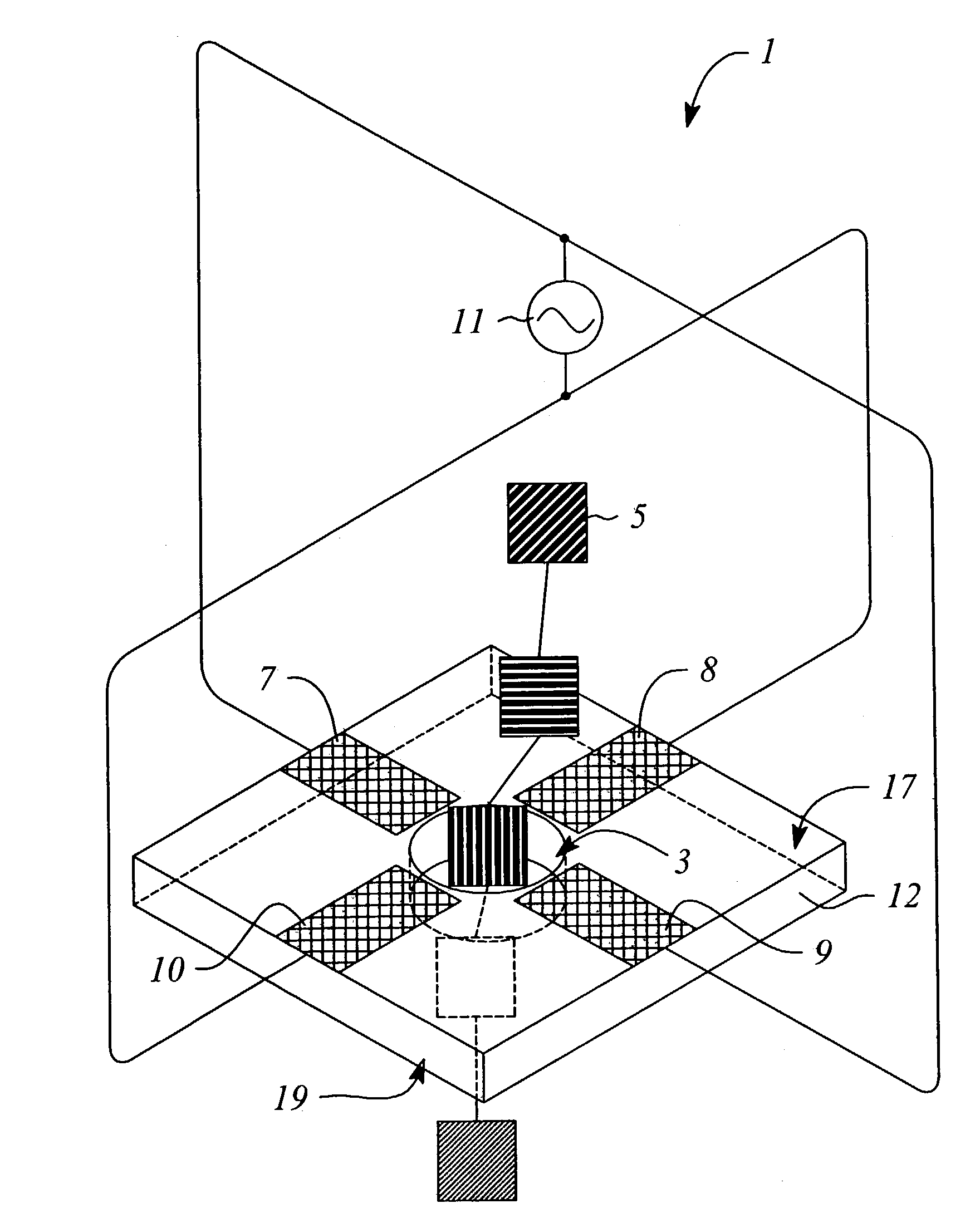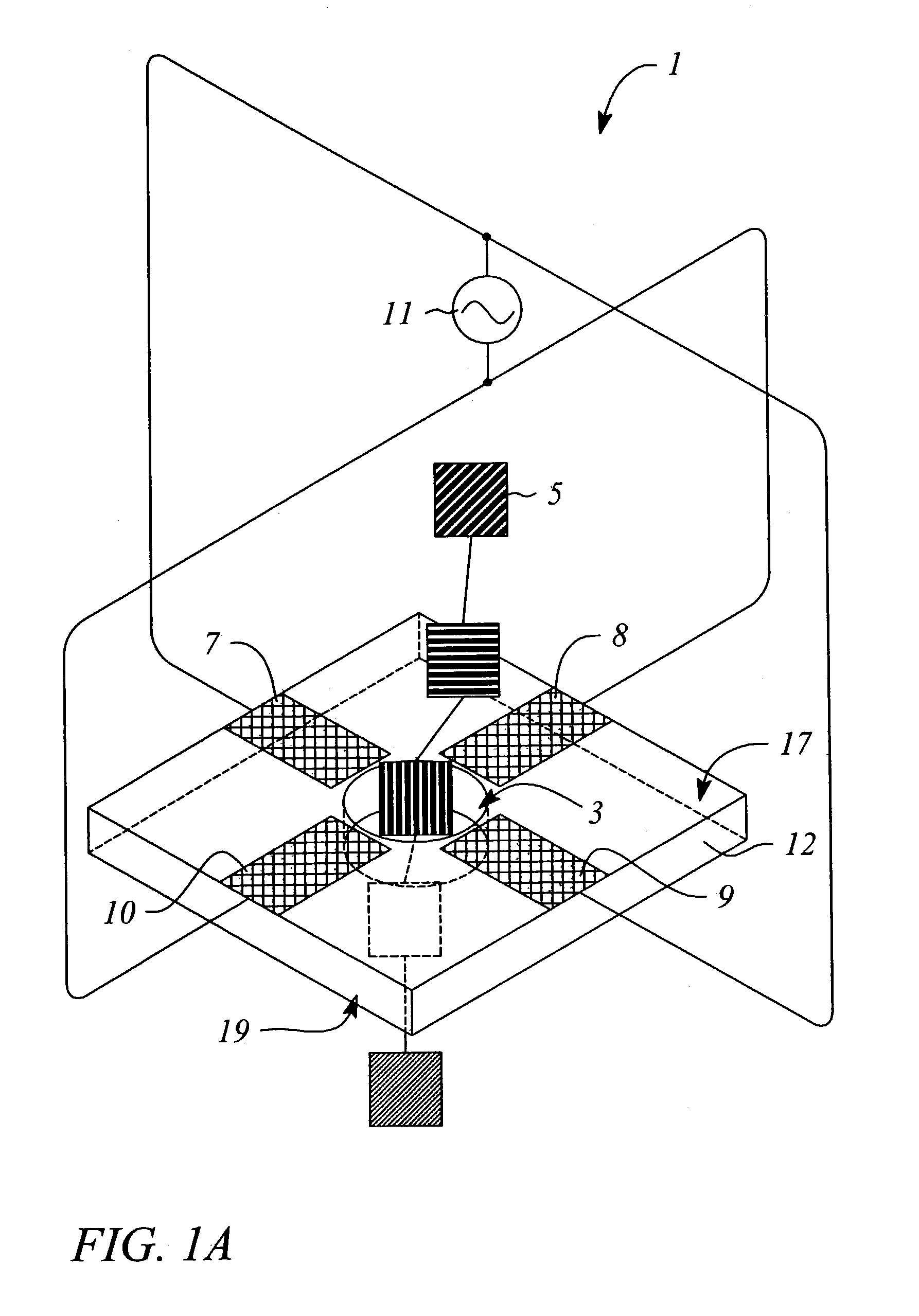Apparatus and method for control of biopolymer translocation through a nanopore
a technology of biopolymer and nanopore, which is applied in the field of biopolymer control, can solve the problems of long time for effective, large amount of genomic dna in a patient, and inordinate amount of time and work
- Summary
- Abstract
- Description
- Claims
- Application Information
AI Technical Summary
Benefits of technology
Problems solved by technology
Method used
Image
Examples
example 1
[0051]An example of the described device could be fabricated using techniques known to those skilled in the art. For instance, the nanopore can be made in a thin (500 nm) freestanding silicon nitride (SiN3) membrane supported on a silicon frame. Using a focused Ion Beam (FIB) machine, a single initial pore of roughly 500 nM diameter can be created in the membrane. Then, illumination of the pore region with a beam of 3 KeV Argon ion sputters material and slowly closes the hole to the desired dimension of roughly 2 nM in diameter (See Li et al., Nature, 412: 166–169, 2001). Metal electrodes are formed by patterning and evaporation, or other deposition means, to generate the quadrupole structure. Wire bonding to the metal electrodes allows connection to the RF voltage source. The RF voltage source has the modest requirements of several hundred microvolts at a frequency of 1.0 GHz.
example 2
[0052]A second example of the present invention would be similar to the first, however, and additional set of four electrodes are deposited on the opposing face of the substrate. The second set of electrodes are wired bonded in parallel to the RF voltage source, allowing coherent generation of the quadrupole fields over the length of the nanopore.
PUM
| Property | Measurement | Unit |
|---|---|---|
| size | aaaaa | aaaaa |
| size | aaaaa | aaaaa |
| frequency | aaaaa | aaaaa |
Abstract
Description
Claims
Application Information
 Login to View More
Login to View More - R&D
- Intellectual Property
- Life Sciences
- Materials
- Tech Scout
- Unparalleled Data Quality
- Higher Quality Content
- 60% Fewer Hallucinations
Browse by: Latest US Patents, China's latest patents, Technical Efficacy Thesaurus, Application Domain, Technology Topic, Popular Technical Reports.
© 2025 PatSnap. All rights reserved.Legal|Privacy policy|Modern Slavery Act Transparency Statement|Sitemap|About US| Contact US: help@patsnap.com



